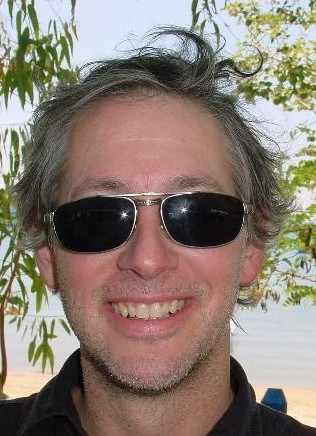- unknown (b.)
Bio/Description
A career computer scientist and physicist, he has received a number of awards for his work. His most noted achievements are in the field of numerical relativity, which involves solving Einstein's equations on computers. His research groups are known for modeling black hole collisions and for work in scientific computing. He is also a co-founder of the Cactus Framework; an open-source, problem-solving environment designed for scientists and engineers. Its modular structure easily enables parallel computation across different architectures and collaborative code development between different groups. Cactus was developed and used over many years by a large international collaboration of physicists and computational scientists. He is Director of the National Center for Supercomputing Applications, and as of January 2014, he is a Founder Professor in the Department of Physics, and a Professor in the Department of Astronomy at the University of Illinois at Urbana-Champaign. Born in Bethesda, Maryland, he received a B.S. degree in Mathematics and Physics from William & Mary in Virginia in 1981. He received an M.S. degree in Physics in 1983 from the University of Pennsylvania; and his Ph.D. in Relativity and Astrophysics from Yale University in 1987. Beginning in 1989 he worked as a Senior Research Scientist and Associate Professor at the National Center for Supercomputing Applications (NCSA) at the University of Illinois at Urbana-Champaign in the Physics and Astronomy departments. From 1996 to 2003 he was the Head of the Numerical Relativity Group at the Max Planck Institute for Gravitational Physics (Albert-Einstein-Institut) in Potsdam, Germany. As a professor at AEI, he led internationally leading research groups in numerical relativity and scientific computing. He also led the EU Astrophysics Network in addition to other projects, and was deeply involved in the GridLab project. He moved to Baton Rouge, Louisiana in 2003to lead the LSU Center for Computation & Technology (CCT), as the founding Director. While there, he also served as the first Chief Scientist for the Louisiana Optical Network Initiative, or LONI, which connects supercomputing resources throughout Louisiana to enable faster and more accurate research collaboration. From 2008 to 2010, he was the National Science Foundation (NSF) Director of the Office of Cyberinfrastructure, responsible for U.S. national programs in high performance computing and applications, software, networking, and computational science; and from 2009 to 2012 he was the Assistant Director for Mathematical and Physical Sciences at NSF in Arlington, Virginia. From September 2012 until January 2014, he was the Senior Vice President for Research and Innovation and a Professor at the Skolkovo Institute of Science and Technology in Moscow, Russian Federation. In November 2006, at the Supercomputing Conference in Tampa, Florida, he received the Sidney Fernbach Award, "For outstanding contributions to the development of software for HPC and Grid computing to enable the collaborative numerical investigation of complex problems in physics; in particular, modeling black hole collisions." This award is one of the highest honors in computing. He was also awarded the Heinz-Billing-Preis of the Max Planck Society in 1998, and shared the Gordon Bell Prize in 2001 with colleagues. He is a Fellow of the American Physical Society and of the American Association for the Advancement of Science, as well as a member of the Institute of Electrical and Electronics Engineers (IEEE) and the Society for Industrial and Applied Mathematics (SIAM).
-
Noted For:
Co-founder of the Cactus Framework; an open-source, problem-solving environment designed for scientists and engineers -
Category of Achievement:
-
More Info:


